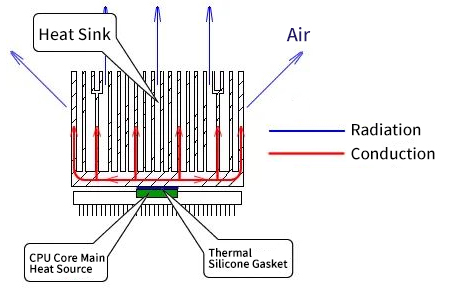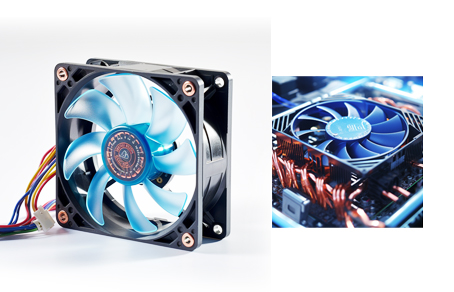Thermal Dissipation Principles
Heat dissipation principle
Conductive thermal dissipation refers to a method where heat from a heat source is directly transferred through a conductive medium or by contact with it to achieve dissipation.
For instance, in CPU cooling, using a thermally conductive silicon gel pad to adhere the CPU to the cooling module accelerates the transfer of heat from the CPU to the cooling module, thereby reducing the CPU temperature.

Radiative thermal dissipation is another significant method.
It emits the body’s heat in the form of thermal radiation to surrounding objects with lower temperatures, i.e., radiating into cooler air.
For example, in CPU cooling, after the CPU transfers heat to the cooling module via a thermally conductive silicon gel pad, the cooling module then releases the heat into the surrounding cooler air through radiative dissipation.

This is the primary passive cooling method, subject to environmental temperature influences.
Convective thermal dissipation is a method of heat transfer achieved through airflow. For instance, in computers, a cooling fan blows away the heat generated inside and introduces cold air, increasing airflow to achieve better cooling efficiency.

Evaporative thermal dissipation is a method where heat is carried away by the evaporation of moisture.
For example, when the human body sweats, the evaporation of sweat absorbs heat from the skin’s surface, helping to maintain a lower body temperature.





